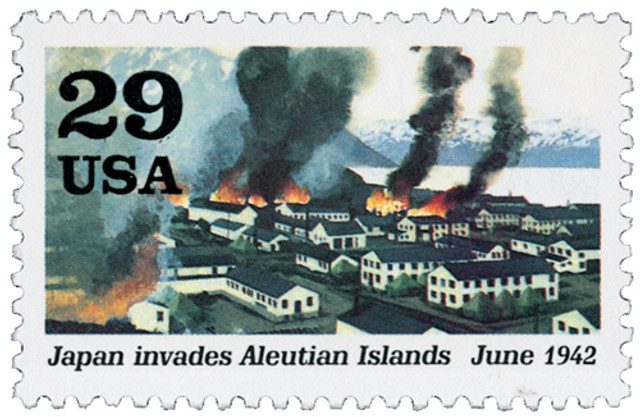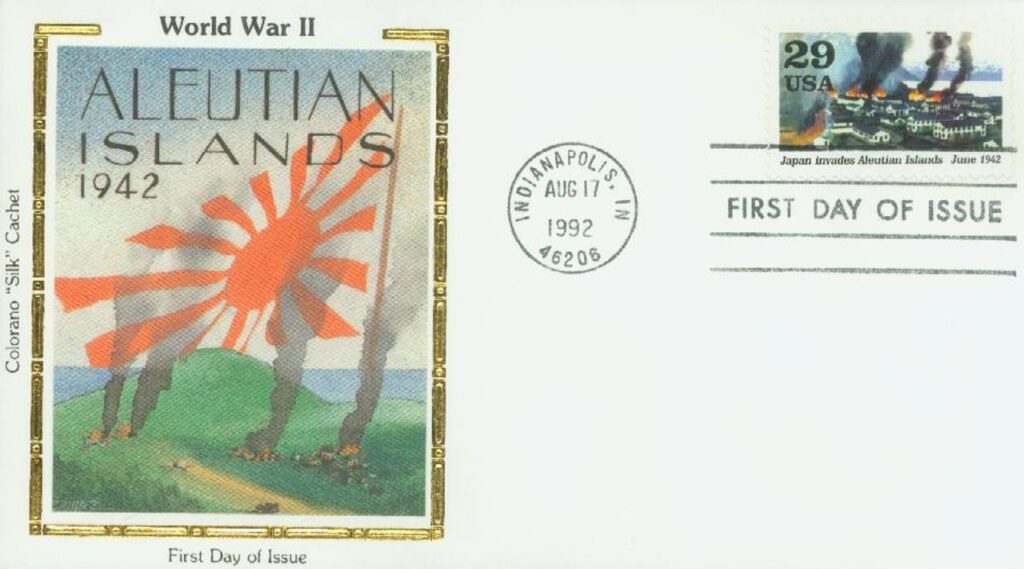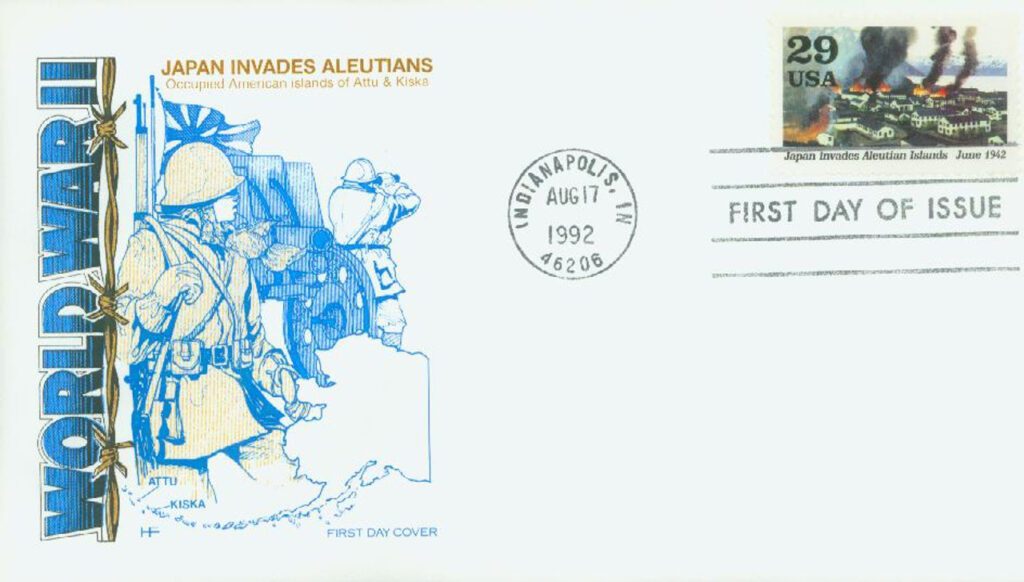One June 3, 1942, Japanese forces kicked off the 14-month Aleutian Islands Campaign. The campaign’s two Japanese invasions were the only ones on US soil during the war.

Before World War II, Japan had gathered information on Alaska’s Aleutian Islands, though none of it was up-to-date by 1942. It was in 1942 that the Japanese decided to attack the Aleutian Islands to prevent the US from launching their own attack across the Northern Pacific. Some historians have also suggested that the invasion of the Aleutian Islands was a diversion to draw the US Pacific Fleet away from the Midway Atoll, which the Japanese attacked on June 4.
The Japanese plan was to launch an air attack on Dutch Harbor followed by an amphibious attack on the island of Adak, 480 miles west. Japanese troops were ordered to destroy any American defenses there, however, the island was undefended. After this, they would conduct landings at Kiska, 240 miles west of Adak, and Attu, 180 miles west of Kiska.
However, US Naval intelligence had cracked the Japanese code and knew of the looming attack by May 21, 1942. At the time, there were about 45,000 US soldiers in Alaska, many of which were air force personnel and engineers – with only about 2,300 infantry troops spread across three bases.
Once American intelligence learned of the impending Japanese attack, Air Force reconnaissance planes were sent out to search for the fleet. On June 2, one of these planes spotted the fleet 800 miles southwest of Dutch Harbor. However, bad weather prevented them from tracking the fleet later in the day.
On June 3, 1942, the Japanese started a two-day bombing of Dutch Harbor. Only about half of the bombers achieved their goals, however, as many got lost in the dark and fog and crashed in the ocean. Seventeen Japanese planes reached the base, but were immediately subjected to intense anti-aircraft fire and attacks from Air Force fighters. The Japanese pilots were surprised by the American response and quickly dropped their bombs and rushed back to their carriers, inflicting minimal damage. The Japanese returned the next day better prepared and inflicted more damage to the oil storage tanks, hospital, and beached barracks ship.

Bad weather made it difficult for American pilots to sink the Japanese ships as they were ordered. However, the weather also forced the Japanese to cancel their planned invasion of Adak. However, they proceeded with their attacks on Kiska on June 6 and Attu on June 7. These invasions shocked America. Many in America feared that if the Japanese retained control of the Aleutian Islands, they could launch attacks on the US West Coast.
The US Air Force set up a base on Adak Island from which to bomb the Japanese on Kiska. Navy ships and submarines also patrolled the area, engaging the Japanese fleet on several occasions. In March 1943, American forces successfully eliminated the Japanese supply convoys in the Battle of the Komandorski Islands. In May 1943, American infantry launched Operation Landcrab, to recapture Attu. The grisly battle saw one of the largest banzai charges of the Pacific campaign, but ultimately the Japanese force there was decimated.

In August 1943, a combined force of 34,426 US and Canadian troops landed on Kiska, after a three-week barrage. However, they found the island had been abandoned two weeks earlier and the campaign was declared over by August 15. The campaign has been called the “Forgotten Battle” because it was overshadowed by several other battles. Several areas from the battle were later placed on the National Register of Historic Places or declared National Historic Landmarks.
Find out more from the Aleutian Islands World War II National Historic Area website.
| FREE printable This Day in History album pages Download a PDF of today’s article. Get a binder or other supplies to create your This Day in History album. |
Discover what else happened on This Day in History.




Great stuff. Have you stopped or forgot to offer a “Download a PDF of today’s article”?
need the PDF version
I am also looking for the PDF download.
I need the PDF version
Need PDF version
I also notice that the PDF option is rather hit and miss.
In 1943 it was the U.S. Army Air Force…..
I agree, it would be great to get the pdf version to download and print.
pdf mia
where is the PDF file and still missing FEB 3 PDF file 1945
Me too. Need the PDF
What happened? Missing option for PDF version today.
Sure would like the PDF version to be consistent.
Did I miss something?? What happened to the pdf file at the end of the article?
The “This Day in History” articles have brought back life to my stamp collecting. Please don’t let them die!
Thanks
No PDF version available today !
thank you for the PDF version walter arnold
Dave Duncan
Try Control – Print
Thank you , Mr Les Doti. All articles that are related to commemorative and
definitive stamps will always bring LIFE to our respective stamp collections,
and to all collections.